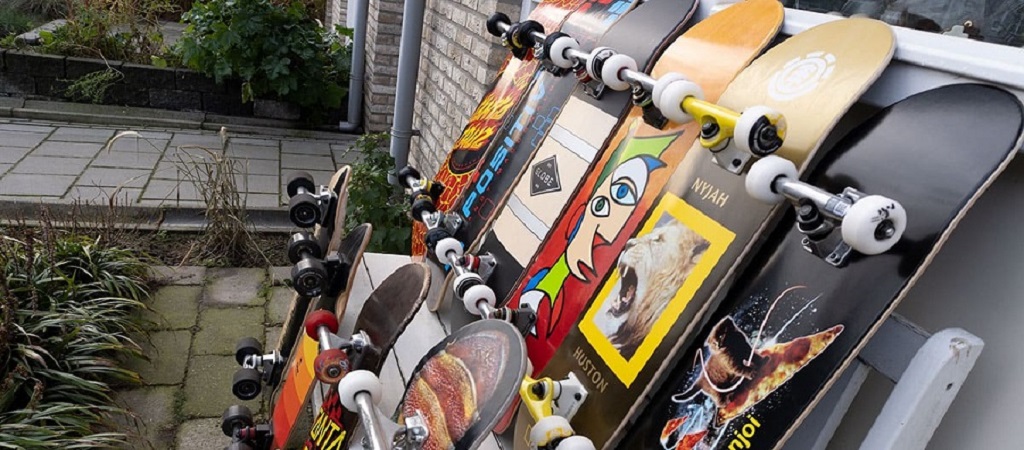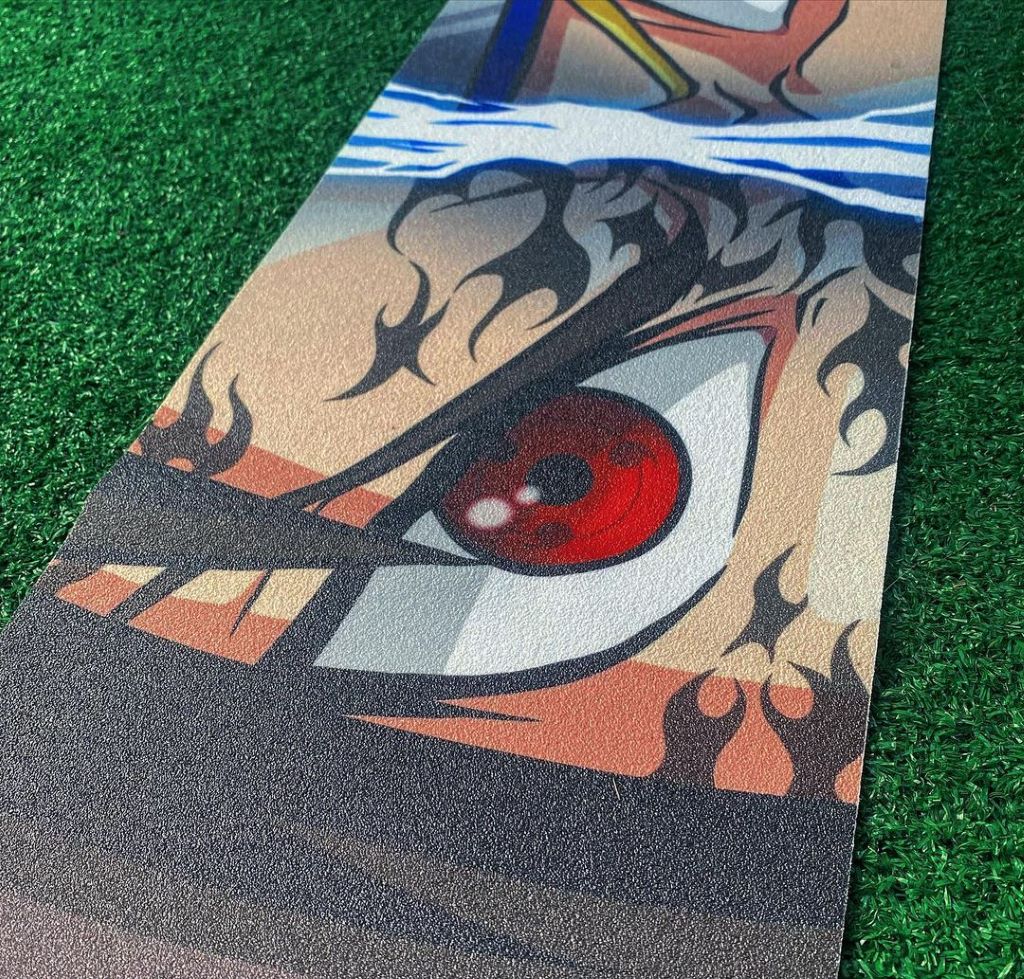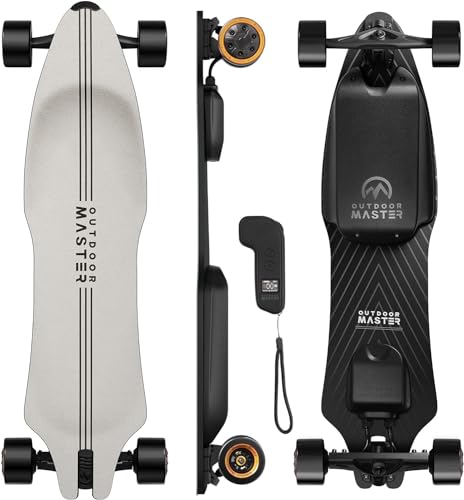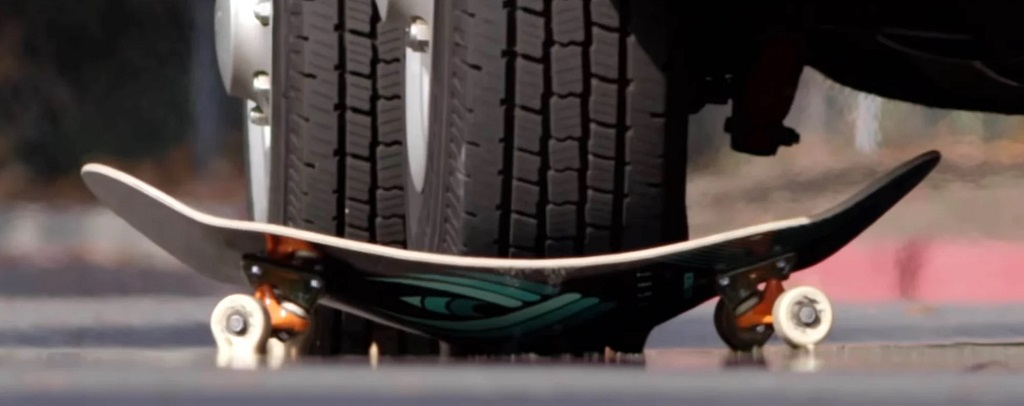Are you looking to buy a skateboard for the first time?
Feel lost?
Glad you stopped by because I feel your frustration! To understand differences between brands, sizes, shapes, and finally contemplate the price tag? This daunting task took me ages to figure out.
I solved the problem by upgrading parts and trying various brands over the years.
Battling this frustration allowed me to establish extensive insight to avoid earlier mistakes. This guide will steer you in the right direction.
Before we dive into detail, here’s an overview of what you need when buying a skateboard for the first time.
1. Create A budget.
2. Where to buy a skateboard.
3. Choose a type of skateboard.
3. Pre-assembled VS custom.
4. Choose a deck.
5. Select Hi-grade trucks.
6. Long lasting wheels.
7. Basic bearing set.
8. Durable hardware.
9. Grip Tape.
1. Create A Budget
For parents out there, one problem of concern is whether your child will enjoy skateboarding.
The solution? Buy a cheap $30 skateboard instead! This mindset will only cause trouble because quality is key. One concerned parent brought up a valid point on Reddit.
My husband and I have always been of the mindset that if it isn’t fun to play/ride, the child won’t enjoy it enough to get good at it. For this reason, we try to buy good quality instruments and bikes and such. We also dig safety. 🙂 However, I don’t want to spend a bunch of money on a skateboard if she will not have a passion for it. Is there a happy medium somewhere? A well-made board that won’t break the bank?
My buddies and I began riding around on cheap boards from Toys R Us. I never thought I’d develop a passion for skateboarding until the people I met inspired my ambition to continue.
For those who continue to pursue it, I recommend saving money. Find a way to set aside $100, because life happens.
- Broken boards
- Bearing cages crack
- Destroyed shoes
- Broken truck axle plates
- Stolen board (the worst!)
2. Where To Buy A Skateboard
There are 2 common places to find skateboarding equipment.
Local Skate Shop
A local shop may be available, jump on Google and search “Nearest skateboard shop”. What pops up near me is an exemplary example of where we run into issues.
There are 3 problems I ran into here.
Problem #1:
Eastern Pulse has been a small local skater-owned shop for the past 20 years. As a regular, I preferred doing business with them.
They distinguished the signs of decline with bone dry inventory, and hours were not exact. Hey, I give HUGE credit to a dad of 3 for keeping his baby alive.
Problem #2:
Search results populated related stores, “Skaters Landing” is an ice skate sporting goods store. No skateboards here!
Problem #3:
Corporate run skate shop, Zumiez, serves 693 locations and is a controversial topic of discussion. We can find reasons online, but mostly because they put core shops out of business.
They establish most stores inside local malls. If you want a board today, this is the fastest option.
Online
There is no doubt buying a skateboard online is convenient, you can score the best prices. Many of the best online skate shops offer blowout deals in their “Sale” sections.
3. Choose Type Of Skateboard
| Types Of Skateboards | Reasons To Buy |
|---|---|
| Park/Street | The most common type of skateboard is best for learning technical tricks or transitions (ramps/mini-ramps. Consider one for attending lessons, or at the skatepark. |
| Cruiser | Best for those intermediate skaters who look for a setup for riding down crusty streets, basic travel to class, or bombing hills. These offer significantly smoother rides and increased stability with wider decks, trucks, and bigger wheels. |
Plenty of people skateboard that aren’t interested in going to the park, or learning tricks. Rather, use this device to commute to class, and blast down city streets/hills for fun. Whatever the case may be, there’s a board for almost anyone.
Pre-Assembled Vs Custom
Here are money saving alternatives.
Pre-Assembled
A pre-assembled complete is cost-effective. A superb choice if you don’t wish to assemble yourself. Although, you can’t select your parts.
They arrive with the following parts.
- Generic bearings: Standard Abec 5-rated bearings work fine. These will last with proper upkeep.
- Standard trucks: Mid-grade trucks are okay for starters, when ripping on top of rails and ledges, they are prone to hang-ups (sticking to objects).
- Wheels: Brand wheels are likely arriving in beginners’ recommendation (52mm, 95a/99a durometer).
- Deck: Basic blank, or team deck. Quality is as good as the model.
Custom Build Your Own
Custom building your skateboard allows you to choose your parts individually. There are 5 parts to select.
- Deck
- Pair of trucks
- Set of wheels
- Box of bearings
- Griptape
4. Choose A Deck
I broke decks often, so this became routine. Over time, I developed vast product awareness and knew what worked best for me. The features I drilled down on helped make this better understood.
- Size
- Construction
- Brand
- Cost
There are variations of deck sizes to choose from. Features vary in width, and length, and change how a board responds.
Size
How width affects performance changes drastically.
Wide Skateboard Decks:
- Increase stability and control.
- Greater area for foot placement for tricks.
- May be easier to land and catch tricks.
- Best for transition skating.
Narrow Decks:
- Lighter
- Easier to flip.
- Ideal for younger kids with smaller feet.
- Greater chance of breaking.
- Harder to control.
As a beginner, you need to focus on width. When I started skating at age 12 to around 16, the board size that performed best for me was a 7.5”-7.75.”
Although, as I grew up, I found that sizing up to a size 8” deck fit perfectly.
My Recommendation
For a novice, an 8″ popsicle board is common to start with. This is a good starting position that you can alter in between sizes later on.
Construction
They make all skateboard decks from 7 -layers of “hard-rock maple”, and one of the strongest woods available. However, there are flaws.
- Pre-mature breakage
- Wood becomes weak and becomes “soggy” and flat.
Improved designs counter and decrease these problems. Only a few are worth the extra few bucks.
Brand
There are many brands out there, and so many epic eye-catching graphics. Where to even begin? I always try new brands because each has distinct characteristics that I stumble upon. How do you choose a brand, though?
- Choose a size first to narrow the selection.
- Pick a graphic that interests you or a pro rider.
How Much Should You Spend?
I always find the best price possible. The only time I go over budget is on new technology or sick graphics. Otherwise, I stay under $50 and go with a blank or shop deck.
5. Select Hi-Grade Trucks
There are performance benefits each truck brand offers. The initial thing is to ensure they fit the deck you chose.
Height
Skateboard trucks have 3 height levels. The differences alter how a board turns, grinds, and trick performance. Whether this affects performance is controversial, but I have found this to be true.
- Higher trucks increase the overall distance one end of the board takes to hit the ground. The increased leverage is believed to increase “pop” with tricks like ollies.
- Mid-size trucks are a sweet spot for those all-around skaters.
- Low trucks create the opposite effect, enabling greater response.
A higher truck works best for taller dudes like myself, whereas lower trucks feel awkward, and too low to the ground.
The time taken to snap the board down and perform tricks is generous enough. A shorter person, or younger skater, may find low trucks to fit this timing factor. In either case, leg strength will be the number one way to improve performance.
6. Long Lasting Wheels
Wheels are created from urethane, a compound that changes speed, acceleration, and sliding capabilities.
Features Include:
- Wheel size.
- Durometer.
- Contact Patch.
- Technology.
Wheel Sizes
Wheels are measured in millimeters (mm) ranging from 48mm-60mm+.
- Smaller wheels (50-53mm) are great for street skating. They are lighter and easier to flip tricks. Acceleration is slower but provides higher top speeds.
- Medium wheels (54mm-59mm) are stable, and the best option to start with.
- Bigger wheels (over 56mm) are suitable for cruiser boards for battling rough territory.
Durometer (Hardness)
The durometer measures wheel hardness.
- Harder wheels initiate quicker into a slide, providing optimal sliding performance, overall they last longer and are best for smooth surfaces.
- A softer wheel sheds quicker, and slower on smooth surfaces, but provides maximum grip.
Contact Patch
Once you’ve settled on size and durometer, the last feature is the contact patch or the width.
Slimmer wheels between 15 mm and 17 mm are outstanding for park and street skating. They may roll slower, but easier to control momentum. Since a skinnier wheel grips less, this makes power sliding easy.
- Wider contact increases stability and is better for landing tricks. They offer better grip, higher top speed, and ride better on rough surfaces.
Wheel Technology (Formulas)
A whole science goes into developing special formulas to improve performance and durability. My favorite one has been Spitfire Formula 4 because they never flat spot, and have superb grip.
7. Basic Bearing Set
Bearings help wheels spin. The inner balls inside spin and are made from steel. Top-end bearings use ceramic internals to increase durability and reduce weight.
- Abec 5 rated is the standard skateboard bearing applied to complete skateboards.
- Skate Rated bearings, designed by Bones one of the best brands in the industry. They designed this rating system for skateboarding.
8. Durable Hardware
Hardware attaches your deck to your board. There are different bolts and sizes to select.
Types Of Bolts
Philips’s head is my favorite, and easier to locate tools if lose yours.
Allen bolts are the 6-sided hexagonal-shaped tops that were always a pain for me to find the right tool for (misplacing my tool).
Hardware Sizes
- I recommend 1” all around just in case the need to be risers on.
- Use corresponding bolts (if using risers). For example, a 1/4” riser requires 1 1/4″ bolts.
9. Grip Tape
A fresh piece of grip prevents slips, helping feet stick nice and snug while banging out kickflips or maybe bombing hills. For you first-timers, applying grip is difficult. Consult a local shop, or friend, or hit up YouTube for directions. The most common issues involve uneven placement and bubbles.
- A perforated grip allows bubbles to form upon application.
- The non-abrasive grip is a recent concept, one I have not tried. Others mention the feel differs from the normal grip and is designed to prevent shoes from ripping.
Riser Pads/Shock Absorbers
Riser pads are unnecessary, but good to have in case you upgrade to bigger wheels later on. Bigger wheels, or loosening your trucks increased chances of wheel-bite. A set of risers reduces this risk.
- Absorbs/dampens vibrations from rough terrain.
- Angled risers alter turning response and are geared more towards cruisers/longboards.
Common Problems That Affect Skateboarding Performance
- Wheelbite is caused when wheels touch the bottom of the board, leading to an abrupt halt.
- Skateboard turns by itself: Triggered by trucks being too tight/loose, worn bushings, or bent axles.
- The board is troublesome to push: Caused by warped bearings due to water damage, leading to rust, flat spots on wheels, or axle nuts too tight (even slightly).
- Cracks forming down the board: These are called pressure cracks, formed from the trucks over time, pressure from constant wear and tear.
- Dirty grip tape: I have stepped in dog poop, mud, rode through dusty areas… one of those events that occur when least expected!
What Makes A Good Skateboard?
We can upgrade all skateboard parts over time, although a setup that boasts superior quality includes the following.
- A deck size that fits according to the rider’s size
- Trucks made from quality materials for optimal board control
- Durable wheels designed to cover specific terrain without shredding apart
- An effective bearing for long-lasting roll
Now you have a skateboard, there are 2 other suggestions before we wrap up.
Like anything else (even sports) skateboarding requires shoes and protective gear to get started.
Additional Skateboard Gear To Buy
Skate Shoes
They design skate shoes to withstand abuse from grip tape, and impact. The issue is finding a durable shoe that’s affordable and comfortable. I’ve had shoes last a couple of days before buying a fresh pair. To avoid this mistake, there are several that I recommend trying out.
My Favorite Brands
- Emerica
- Vans
- Es
Protective Gear
Anyone who plans to take lessons or hit up the local park should start with pads. There is a 100% chance you’ll wreck yourself for the first couple of months. Not to mention that local parks may require pads and a helmet.
Recommended Brands
- Pro-Tec
- JBM
- Triple Eight
What Are The Best Brands?
I’ve heard this question asked a handful of times, and the answer is subjective. Skateboarding is what you make it. The best skateboard brands are the ones inspired by local, and professional skaters alike.
However, from a product standpoint, these are things to consider.
- 30-day warranty against deck breakage
- Wheels that perform better than others on similar surfaces
- Trucks with superior durability and grind as smooth as butter
- A deck shape that has exceptional response
- Shoes that last and hug the board a certain way others don’t
Conclusion
It can be hard to buy a skateboard for the first time. The local shop is an exceptional place to start and meet those passionate about skateboarding. I highly recommend a high-quality setup and exploring new brands.




